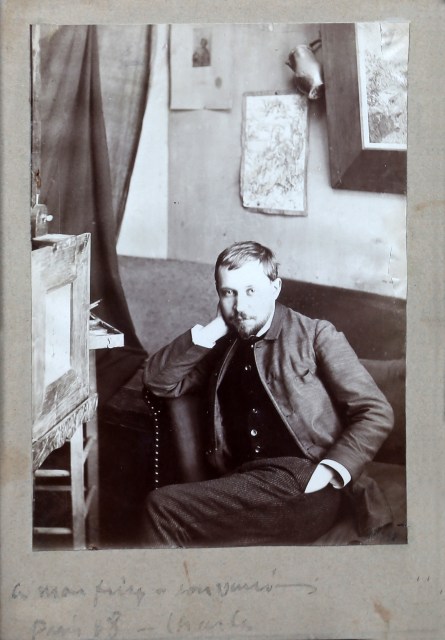The gallery Malingue, true to its commitment to the artists of the Pont-Aven School and Paul Gauguin’s entourage, will hold an exhibition of the work of Charles Filiger, an artist who deserves to be better known.
For the first time in nearly 30 years, art lovers and all those who are curious about the artist will be able to see a wide selection of his work. The last solo exhibition, Filiger, was held at the Musée d’Art Moderne in Strasbourg in 1990. An exhibition in Quimper in 2006 explored the connections between André Breton and the work of Filiger.
Nearly 80 works by Filiger will be on show, along with publications illustrated by him, all of them from either private collections or museums (in France: in Albi, Quimper, Brest and Saint-Germain-en-Laye), including the magnificent The Last Judgment from the Josefowitz Collection, on loan from the Indianapolis Museum of Art.
Thanks to André Breton, Filiger’s work was rediscovered at the end of the 1940s through the exhibition Gauguin and Friends put on by Maurice Malingue, Daniel Malingue’s father, at the Galerie Kléber in Paris. The new exhibition has been organized by Daniel Malingue and his daughter Éléonore, reuniting three generations with a shared passion for the artist.
Filiger, who was associated with the Symbolist movement, spent time with Gauguin in Le Pouldu in 1989-90. They both chose to synthesize and stylize forms after experimenting with Pointillism for a short time. Filiger developed a very personal style in small paintings of Brittany landscapes and of religious subjects, informed by his love of early Italian painting. After looking at some of Gauguin’s paintings, he said to him, “You are Gauguin. You play with light. I am Filiger. I paint the Absolute.”
Filiger’s work was shown in Symbolist exhibitions beginning right after the birth of this new aesthetic, around 1890. They included the Exhibition of Impressionist and Symbolist Painters at the gallery Le Barc de Boutteville in Paris, the Salon de la Rose+Croix at the gallery Durand-Ruel, and the Salon des XX in Brussels. His work was quickly noticed by both the critics and his fellow artists, many of whom were influenced by him. He also became friends with writers associated with this new trend. In 1894, Alfred Jarry published the longest article ever devoted to an artist in Mercure de France, and Rémy de Gourmont asked him to illustrate several of his works. The art patron Antoine de la Rochefoucauld gave him financial support for several years.
After he left Le Pouldu in 1905, Filiger became something of a recluse, wandering around Brittany and living in hotels and hospices. He was finally taken in by a kind family in Plougastel-Daoulas. Although many thought he had died, he actually continued to work even in his isolation.
André Breton was probably attracted to the work of Filiger because of his interest in Gauguin – whom he considered a major painter – and in Alfred Jarry, to whom he devoted an article in 1919 about his role as an art “scout.” After acquiring one of Filiger’s gouaches in 1949, the writer continued to collect his works until the end of his life and introduced them to his Surrealist friends.

